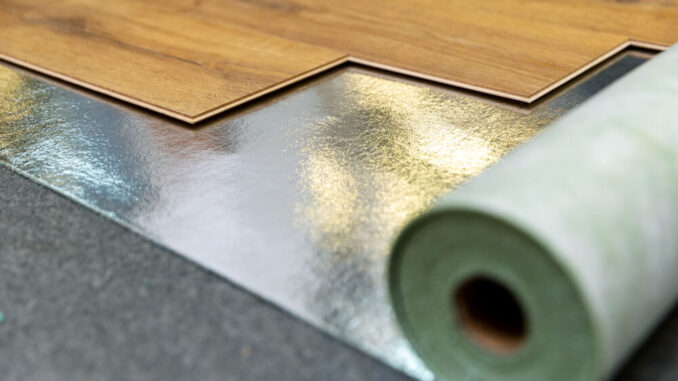
When you’re installing laminate flooring, one question might pop into your mind: does laminate flooring need underlayment? At first, it might seem like an obvious “yes” or “no” answer, but the truth is, the question is more complex than it seems. Laminate flooring is one of the most widely chosen flooring options due to its durability, ease of installation, and affordability. However, the decision of whether or not to use underlayment requires a bit more consideration.
In this article, we will take a deep dive into why underlayment for laminate flooring is a big deal. We’ll explore when it’s needed, when it’s not, the different types of underlayment, and the step-by-step process of installing laminate flooring with underlayment. By the end of this post, you’ll be well-equipped to make the best decision for your laminate flooring project.
What Is Laminate Flooring and Why Is Underlayment So Important?
To begin, let’s take a closer look at laminate flooring and why underlayment for laminate flooring comes into play.
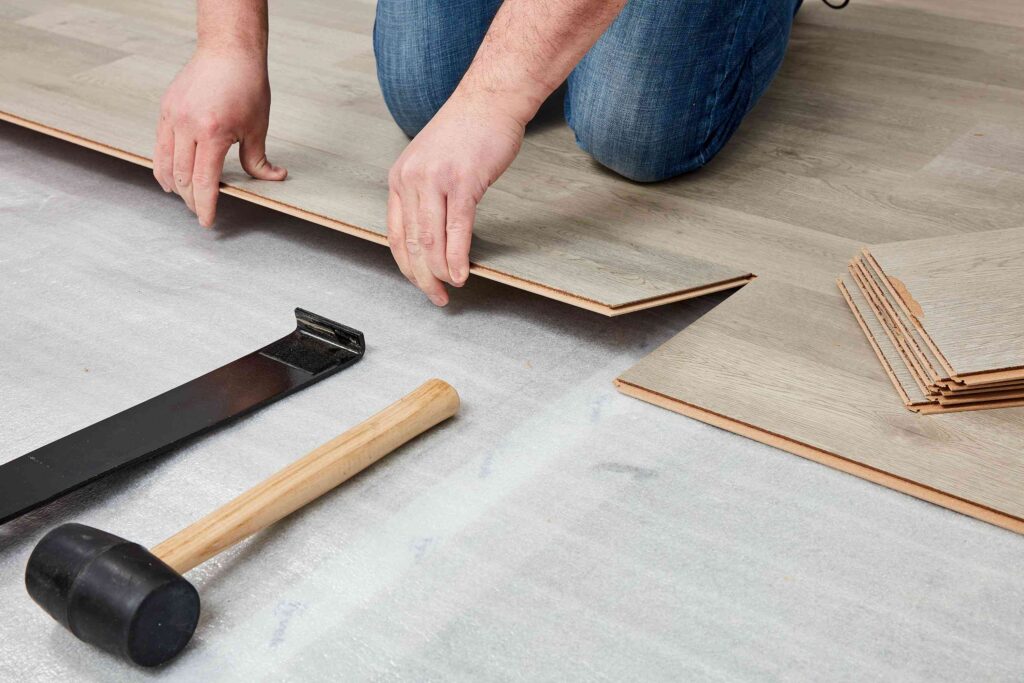
What Is Laminate Flooring?
Laminate flooring is a multi-layer synthetic product made to look like natural materials such as wood, stone, or tile. It consists of several layers: a top decorative layer that mimics the appearance of natural wood or stone, a core layer that gives the floor its strength, and a bottom backing layer that helps with moisture resistance.
Laminate flooring has become a favorite due to its affordability, resistance to scratches, and ease of maintenance. It’s also easier to install compared to traditional hardwood floors, which is a big draw for homeowners looking to do the job themselves. While laminate flooring is durable, whether it needs underlayment is an important consideration. Let’s talk about what underlayment actually is and why it’s such an essential part of many flooring installations.
What Is Underlayment?
Underlayment is a thin layer of material installed between the subfloor and laminate flooring. It’s designed to provide cushioning, protection, and other key benefits that enhance the performance of your laminate flooring. While it may seem like an optional extra, underlayment actually plays a significant role in ensuring that the laminate flooring performs as expected.
Some of the main reasons why underlayment is used include insulation, noise reduction, moisture control, and extra support. It creates a stable and even surface for the laminate, improving both the longevity of the floor and your comfort while walking on it.
The next question is: does laminate flooring need underlayment? Let’s dive into the details of why it may or may not be essential for your specific installation.
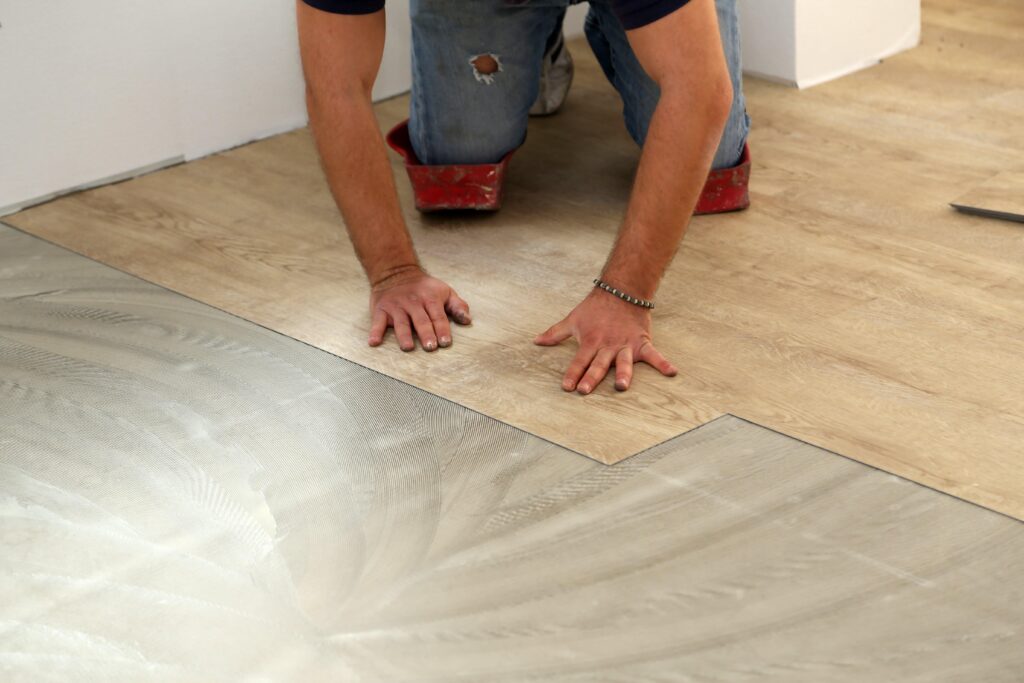
The Purpose of Underlayment: More Than Just a Cushion
Underlayment is not just there to soften the feel of the floor beneath your feet. It actually serves multiple functions that can make a significant difference in the overall quality and performance of your laminate flooring.
Insulation and Noise Reduction
One of the most significant benefits of underlayment is its ability to reduce noise. Laminate flooring, when installed without underlayment, can produce a hollow or echoing sound when you walk on it. This is especially noticeable in apartments or multi-story homes.
Underlayment, however, absorbs the sound of footsteps and minimizes the hollow sound that some laminate floors can make. If you’re in a noisy environment or want to reduce noise between floors, underlayment for laminate flooring is highly recommended.
In addition to reducing noise, underlayment also adds insulation to the floor. This helps regulate temperature, making it more comfortable to walk on during both colder and warmer months. Floors that are too cold or too hot can create an uncomfortable living environment, but underlayment helps maintain a more consistent temperature.
Moisture Protection and Temperature Control
Moisture protection is another significant reason why does laminate flooring need underlayment? The answer is yes, especially if you’re installing laminate flooring in moisture-prone areas such as basements, kitchens, or bathrooms. Without underlayment, moisture can seep through the laminate, causing it to warp or swell over time.
Underlayment serves as a moisture barrier, preventing water from seeping into the laminate and subfloor. This is especially important in basements, where moisture from the ground can seep up through concrete floors, causing damage to laminate over time.
Temperature regulation is another factor where underlayment plays a role. It helps prevent the laminate flooring from becoming too cold or too warm. In areas with colder climates, underlayment can prevent the floor from becoming uncomfortable to walk on. For warmer areas, it can help the floor feel cooler.
Enhanced Stability and Support
In addition to moisture protection and noise reduction, underlayment also improves the stability and support of the laminate flooring. If the subfloor is uneven, underlayment can fill in gaps and provide a more even surface for the laminate. This is crucial because any imperfections in the subfloor can lead to issues like gaps or movement between the laminate planks.
Underlayment also enhances the structural integrity of the floor, preventing sagging or warping over time. This makes the floor more durable and longer-lasting, as it helps to maintain the laminate’s alignment.

When You Absolutely Need Underlayment for Laminate Flooring
While underlayment for laminate flooring isn’t always a requirement, there are several specific situations where it’s absolutely necessary. Let’s explore these scenarios in more detail.
Uneven Subfloors: Why Underlayment Helps
If your subfloor is uneven, it can create problems when laying laminate flooring. Without underlayment, any unevenness in the subfloor can cause the laminate planks to shift, buckle, or create gaps. This instability can lead to an unsightly and uncomfortable floor.
Underlayment helps fill in the gaps and smooth out any imperfections in the subfloor. By doing this, it ensures that the laminate flooring has a smooth and stable surface to rest on. So, if your subfloor is uneven, using underlayment for laminate flooring is essential.
Moisture-Prone Areas: Protecting Your Floors in Basements, Kitchens, and Bathrooms
Areas that are prone to moisture, like basements, kitchens, and bathrooms, are prime candidates for underlayment for laminate flooring. Laminate flooring is vulnerable to moisture damage. If water seeps through the floor, it can cause the laminate to swell, warp, or even crack.
Underlayment adds a moisture barrier between the laminate and subfloor, ensuring that any water is kept from reaching the laminate. If you’re installing laminate in areas where moisture is a concern, underlayment is highly recommended.
Soundproofing for Multi-Story Buildings or Noisy Environments
In apartments or multi-story homes, soundproofing is a top priority. Without underlayment, the sound of footsteps on laminate flooring can travel between floors, causing disruptions for people living below.
Underlayment reduces the noise caused by walking on the laminate. It absorbs impact sounds and helps keep your home quieter. So, if you’re living in a noisy building or on multiple floors, does laminate flooring need underlayment? The answer is a resounding yes.
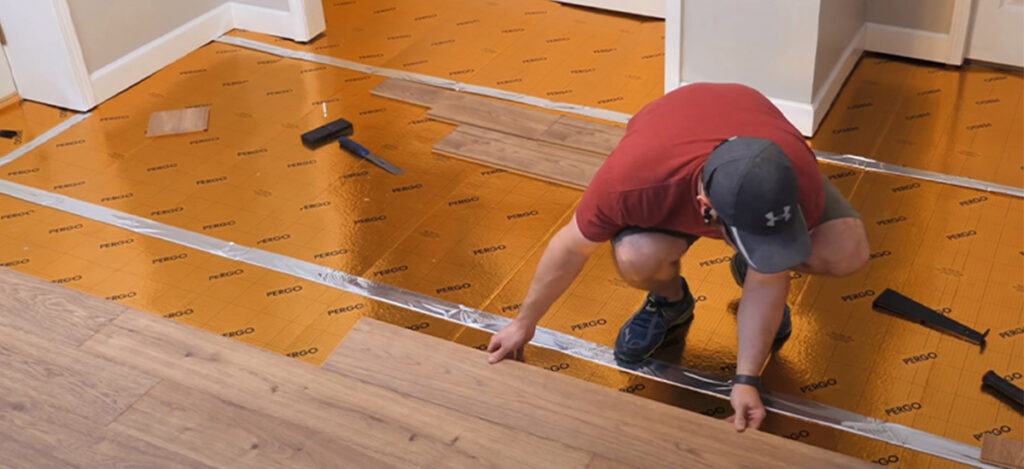
When Can You Skip the Underlayment?
While underlayment is important in many cases, there are also times when you can skip this step in your laminate installation.
If Your Laminate Flooring Has Built-in Underlayment
Some laminate flooring products come with built-in underlayment. These floors are designed with a foam layer integrated into the product, which provides the same benefits as installing separate underlayment.
If you’re using laminate flooring that has built-in underlayment, does laminate flooring need underlayment? In this case, no, it doesn’t. This feature simplifies the installation process since you don’t have to worry about adding an extra layer of underlayment.
For Certain Types of Subfloor (Like Concrete)
Concrete subfloors are durable and solid, making them an ideal surface for laminate flooring. However, concrete can also be prone to moisture buildup, especially in basements. If you’re installing laminate on a concrete subfloor, you might still need underlayment that offers moisture protection.
If your concrete subfloor is level and dry, you may not need underlayment for cushioning or stability. However, if moisture is a concern, it’s essential to use a moisture-resistant underlayment to protect the laminate.
When You’re Using High-Quality Underlayment-Integrated Laminate Products
Certain high-quality laminate flooring products come with integrated underlayment that provides all the necessary benefits. These products typically offer better soundproofing, moisture resistance, and insulation without the need for additional underlayment.
If you’re installing one of these premium laminate flooring products, does laminate flooring need underlayment? In this case, no — it’s already built in.
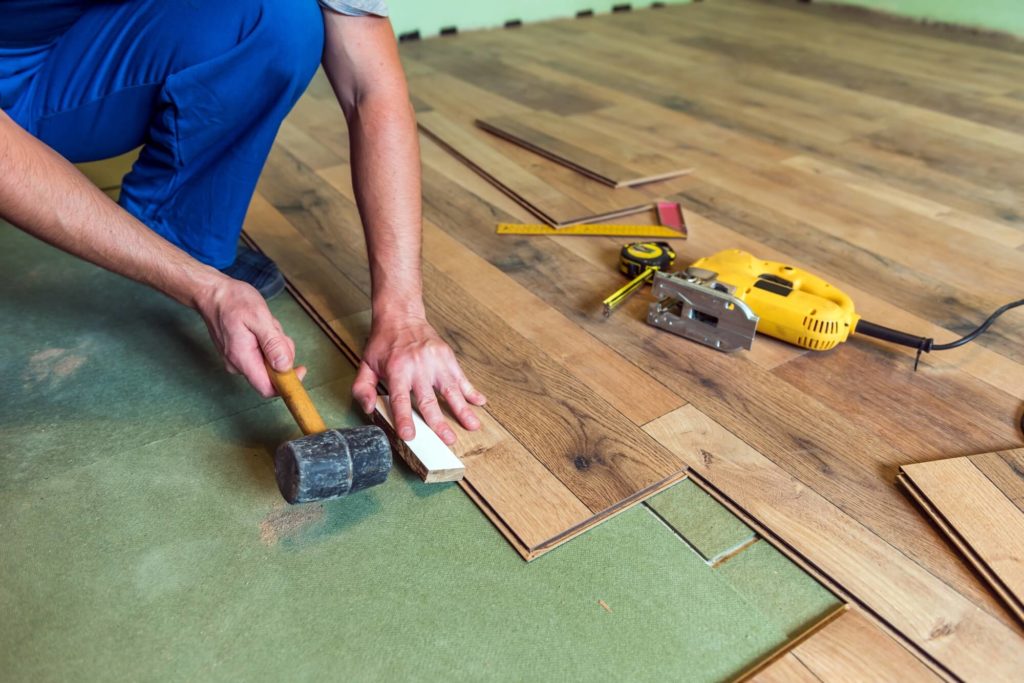
Types of Underlayment: Choosing the Right One for Your Laminate Flooring
When it comes to underlayment for laminate flooring, there are different options to consider. Each type offers its own set of advantages, so it’s important to choose the right one for your needs.
Foam Underlayment
Foam underlayment is the most commonly used type. It’s inexpensive, lightweight, and easy to install. Foam underlayment provides some insulation and noise reduction but might not offer as much moisture protection as other options.
Cork Underlayment
Cork underlayment is an eco-friendly choice that provides excellent soundproofing and insulation. It’s resistant to mold and mildew, making it a great choice for damp areas like basements. Cork underlayment is also great at absorbing impact noise, so it’s ideal for multi-story buildings.
Rubber Underlayment
Rubber underlayment is durable and offers superior soundproofing. It is especially effective at reducing impact noise, making it perfect for high-traffic areas. Rubber underlayment is also resistant to moisture, which makes it a solid choice for kitchens and bathrooms.
Felt Underlayment
Felt underlayment offers good soundproofing and moisture resistance. It’s particularly useful for uneven subfloors because it provides additional support and cushioning. Felt is also eco-friendly, making it a good choice for environmentally-conscious homeowners.
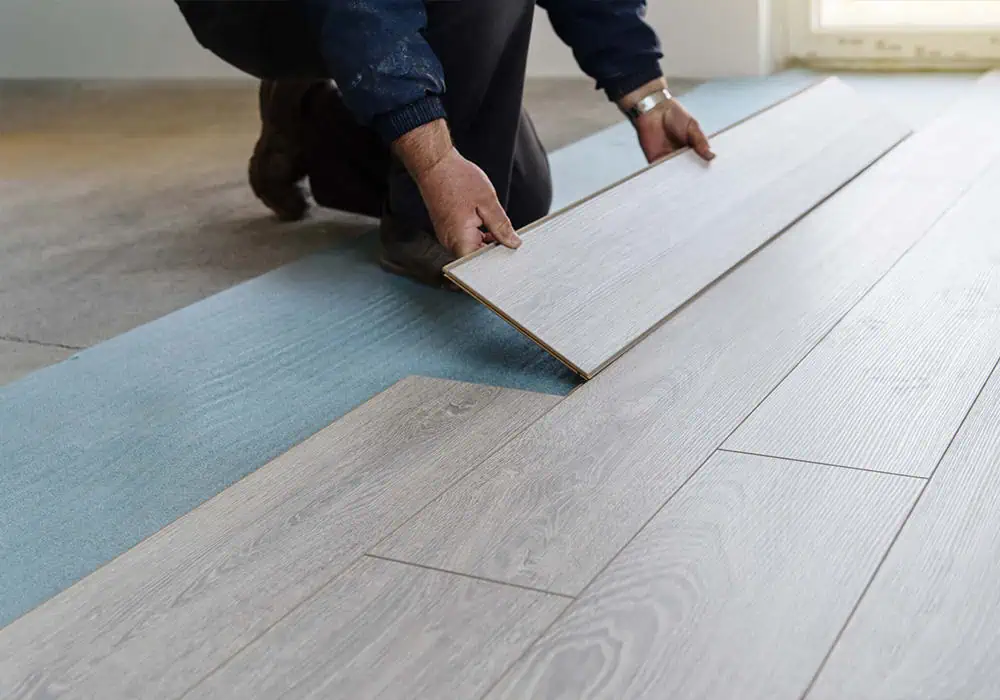
How to Install Laminate Flooring with Underlayment
Now that we know when and why to use underlayment, let’s talk about how to install laminate flooring with underlayment.
Preparing the Subfloor
Before you begin, it’s crucial to ensure that your subfloor is clean, dry, and free of any debris. Remove any nails, staples, or other obstacles that could interfere with the underlayment or laminate installation.
Installing Underlayment
Start by unrolling the underlayment across the subfloor, ensuring that it fits snugly against the edges of the room. Leave a small gap along the walls to allow for expansion. Tape the seams of the underlayment to keep them in place.
Laying the Laminate Planks
Once the underlayment is installed, it’s time to lay the laminate planks. Start at one corner of the room, making sure each plank clicks into place securely. Work your way across the room, trimming the final planks to fit around the edges.
Common Mistakes to Avoid When Using Underlayment
Even though installing underlayment for laminate flooring is a relatively simple process, there are still some common mistakes that people make. Avoiding these can save you time and frustration.
Incorrect Underlayment Thickness or Type
One of the most common mistakes is using the wrong type or thickness of underlayment. Be sure to choose an underlayment that is appropriate for your subfloor type and the climate of your area.
Skipping Underlayment in Areas Where It’s Necessary
Never skip underlayment in areas where it’s needed. If you’re installing laminate in moisture-prone or high-traffic areas, underlayment is essential to ensuring the longevity and performance of your flooring.
Poor Installation Techniques Leading to Damage or Instability
Ensure that you follow the manufacturer’s instructions carefully when installing both the underlayment and laminate. Poor installation techniques, such as leaving gaps or improperly securing the underlayment, can lead to damage and instability in your flooring.
Final Thoughts: Is Underlayment Necessary for Your Laminate Flooring?
So, does laminate flooring need underlayment? The answer depends on several factors. If your laminate has built-in underlayment or if you’re installing on a concrete subfloor, you may not need it. However, in most cases, underlayment provides important benefits such as soundproofing, moisture protection, and added stability.
When deciding whether to use underlayment, it’s important to consider your subfloor type, the environment of the room, and the specific laminate product you’re installing. If in doubt, always err on the side of caution and opt for underlayment to ensure a long-lasting, comfortable floor.